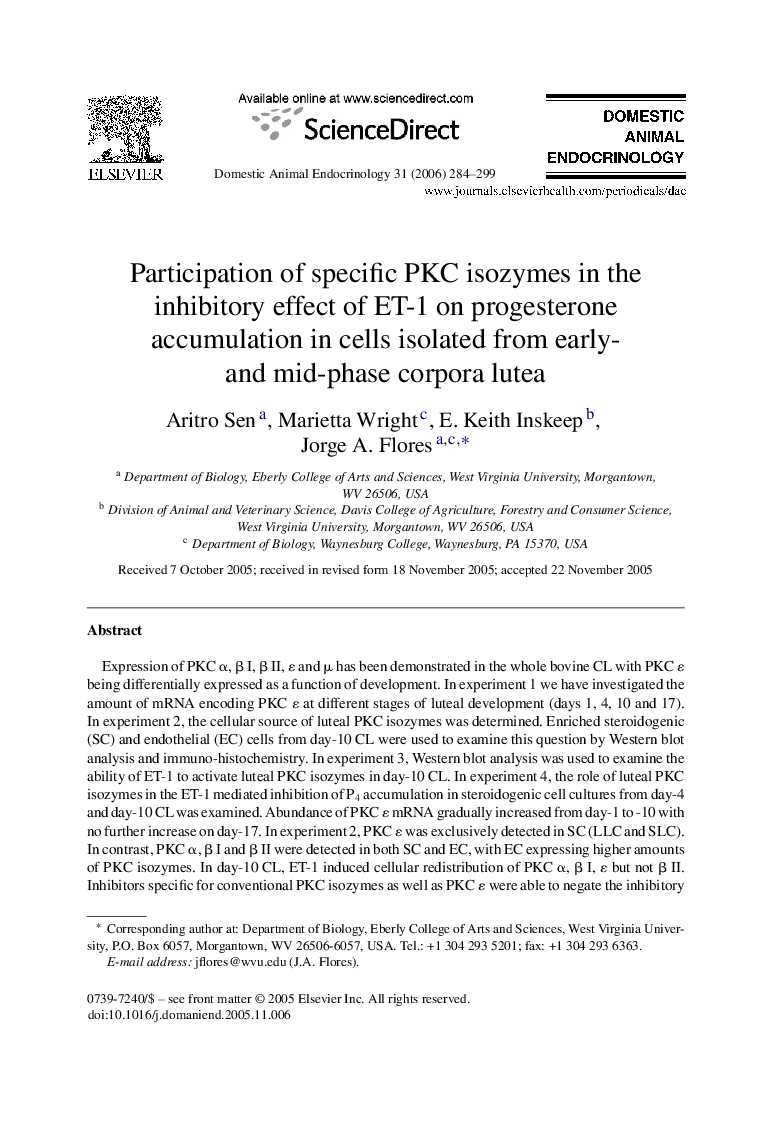| Article ID | Journal | Published Year | Pages | File Type |
|---|---|---|---|---|
| 2394052 | Domestic Animal Endocrinology | 2006 | 16 Pages |
Expression of PKC α, β I, β II, ɛ and μ has been demonstrated in the whole bovine CL with PKC ɛ being differentially expressed as a function of development. In experiment 1 we have investigated the amount of mRNA encoding PKC ɛ at different stages of luteal development (days 1, 4, 10 and 17). In experiment 2, the cellular source of luteal PKC isozymes was determined. Enriched steroidogenic (SC) and endothelial (EC) cells from day-10 CL were used to examine this question by Western blot analysis and immuno-histochemistry. In experiment 3, Western blot analysis was used to examine the ability of ET-1 to activate luteal PKC isozymes in day-10 CL. In experiment 4, the role of luteal PKC isozymes in the ET-1 mediated inhibition of P4 accumulation in steroidogenic cell cultures from day-4 and day-10 CL was examined. Abundance of PKC ɛ mRNA gradually increased from day-1 to -10 with no further increase on day-17. In experiment 2, PKC ɛ was exclusively detected in SC (LLC and SLC). In contrast, PKC α, β I and β II were detected in both SC and EC, with EC expressing higher amounts of PKC isozymes. In day-10 CL, ET-1 induced cellular redistribution of PKC α, β I, ɛ but not β II. Inhibitors specific for conventional PKC isozymes as well as PKC ɛ were able to negate the inhibitory effects of ET-1 on P4 accumulation in the day10 CL. In the day-4 CL, the inhibitory effect of ET-1 might be mediated via conventional PKC. Thus, an exclusive presence of PKC ɛ in luteal steroidogenic cells, its higher expression along with the ability of ET-1 to stimulate its activation in day-10 CL strongly suggests that this PKC isoform may play an important regulatory role in decreasing P4 during luteal regression. Inhibition of P4 by ET-1 in the early CL may be mediated via conventional PKC isozymes.
